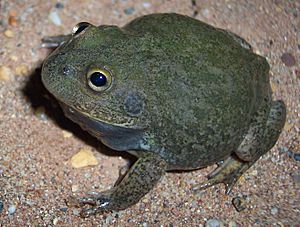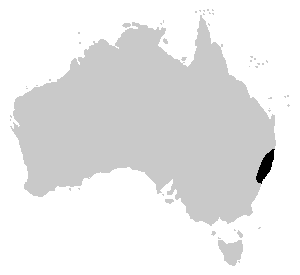Eastern water-holding frog facts for kids
Quick facts for kids Eastern water-holding frog |
|
|---|---|
 |
|
| Conservation status | |
| Scientific classification | |
| Genus: |
Ranoidea
|
| Species: |
platycephala
|
 |
|
| Synonyms | |
|
|
The eastern water-holding frog is a special frog from Australia. It's also known as the flat-headed frog or common water-holding frog. This amazing creature lives in the dry central parts of Australia. You can find it in Queensland, Victoria, South Australia, and New South Wales.
Contents
Meet the Eastern Water-Holding Frog!
This frog is perfectly adapted to live in very dry places. It has unique ways to survive long periods without rain. It can even store water inside its body!
What Does It Look Like?
Adult eastern water-holding frogs are usually between 6.0 and 9.0 centimeters long. That's about the length of a small smartphone! Their skin can be dark or a mix of green colors. This helps them blend in with their surroundings.
Where Does It Live?
These frogs live in many different types of land. They can be found in grasslands and temporary wetlands. They also live near Australian wetlands called billabongs. Billabongs are small lakes or ponds that form when rivers change course.
How Does It Survive Dry Times?
When the weather gets dry, this frog has a clever trick. It digs a burrow deep into the ground. Then, it creates a special cocoon around itself. This cocoon helps it save water and stay moist. It can stay underground for a very long time, waiting for rain. This is how it earned its name, the "water-holding frog"!
How Does It Reproduce?
When the ground finally floods and creates temporary pools, the frogs come out. This is their chance to lay eggs. A female frog can lay as many as 500 eggs at one time! The eggs hatch in these temporary pools. The young frogs then grow quickly before the water dries up again.


